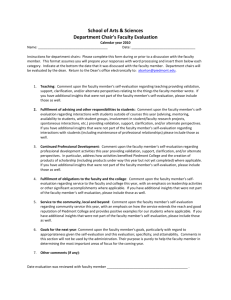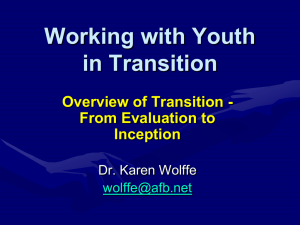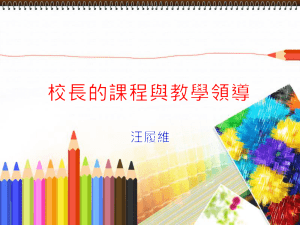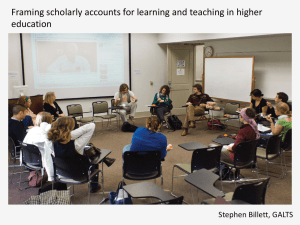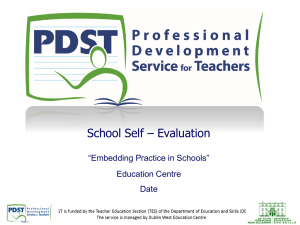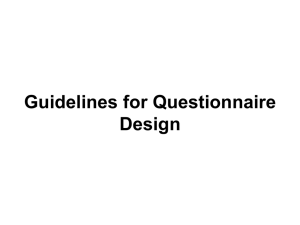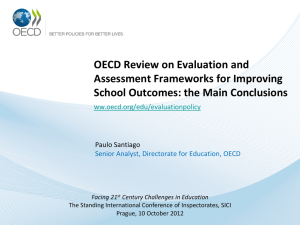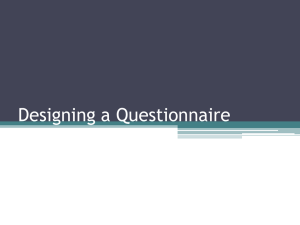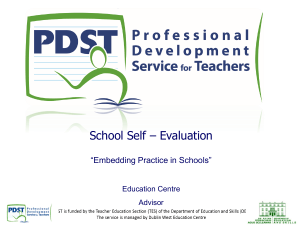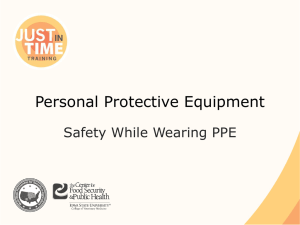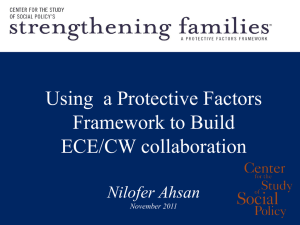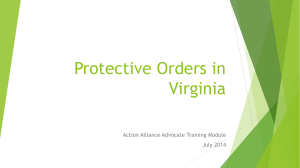Self-evaluation of educational quality
advertisement
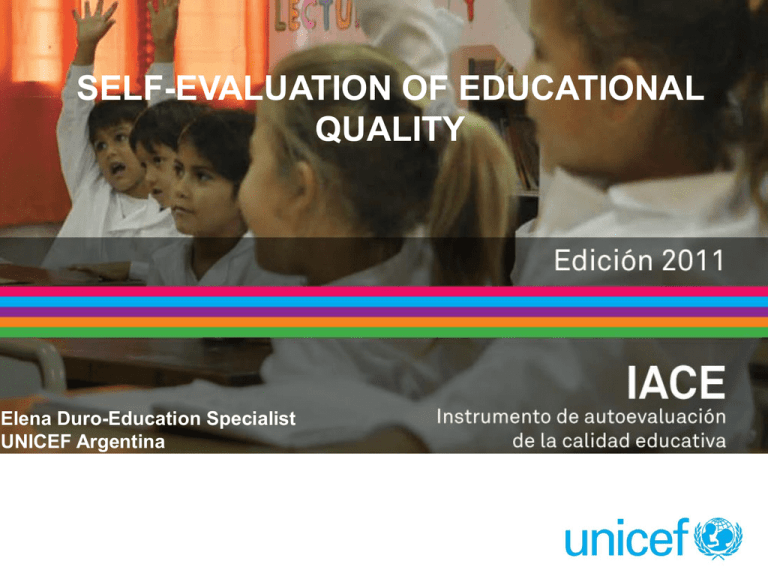
SELF-EVALUATION OF EDUCATIONAL QUALITY Elena Duro-Education Specialist UNICEF Argentina LEGAL FRAMEWORK: NATIONAL EDUCATION LAW 26.206 SECTION 94: “The Ministry of Education will lead the development and implementation of an ongoing and periodic education system information and evaluation policy that will inform decision-making in order to improve the quality of education, social justice, resource allocation, transparency and social participation”. SECTION 96: “The information and evaluation policy will be agreed within the Federal Education Council. The provinces will participate in the development and implementation of the education system periodic evaluation and information system, ensuring that it matches the needs of their own community in the search for educational equality. It will likewise, support and facilitate the self-evaluation of education units with the participation of teachers and other members of the education community”. INSTRUMENT FOR EDUCATION QUALITY SELF-ASSESSMENT Scheduled and systematic self reflection activity on the actions developed, based on reliable information, with the purpose of arriving at well-founded and reportable value judgments on a consensus basis. Rigorous and effective method to recommend improvement actions. Promoting an active participation of teachers and principals, families and students. Collective knowledge generation stemming from practice. Evaluation Culture of the Education Community. OBJECTIVES: SCHOOL -Contributing to the improvement of education quality -Generating self-evaluation culture and procedures -Promoting leadership by the actors involved EDUCATION SYSTEM -Promoting self-evaluation policies -Promoting a change in decisions to include the demands from schools -Supporting external evaluation systems with participatory institutional self-evaluations to increase institutional quality, policies and evaluation culture. EDUCATION QUALITY inclusive and quality education system succeeds having all children and AnAn inclusive and quality education system succeeds in in including al children enrolled in school, completing school meeting the desired adolescents in school, complete theirpathways, school trajectories, meeting the desired theoretical theoreticalage ageand andachieving obtainingadequate adequatelearning learningoutcomes. results A school is a quality school if… • • • • • • • • • • • It succeeds in having everybody learn what they have to learn. It has pertinent and updated teaching objectives. It implements strategies to prevent failure and drop-out. It promotes student access, retention and graduation in accordance with the learning objectives Does not discriminate and works within diversity. Takes into account the unequal situation of students, families and the communities in which they live and promotes special support for those who require it. Promotes and enables a comprehensive development Generates a positive and respectful school environment. Develops an environment that is protective of children rights. Has sufficient human and material resources in accordance with the needs. Promotes the participation of the members of the education community METHODOLOGYSYSTEMATIZATIONMET AEVALUATION Methodological strategy Evaluation of processes resulting from an evaluation Metaevaluation School/ province Systematization Reflexioncontext -processes-results THREE DIMENSIONS OF EDUCATION QUALITY •STUDENT ACHIEVEMENTS AND PATHWAYS. •TEACHER PROFILES AND PERFORMANCE. I. INSTITUTIONAL CAPACITIES AND PERFORMANCE. IACE VARIABLES I. PATHWAYS: Learning outcomes in the areas of: - Language, math, other. ‒Value acquisition. ‒Study Attitudes. Behavior of students in the last 5 years: ‒Absenteeism/repetition/student dropout. II. TEACHER PERFORMANCE: ‒In connection with the school’s targets and teaching objectives. ‒Works within diversity, in accordance with the individual times and interests of the students. ‒Works with students with different capacities. ‒Use of ICTs in its teaching strategies. ‒Capacities to develop monitoring and evaluation criteria and instruments ‒Attendance to ongoing training activities. ‒Non discriminatory. ‒ Capacities to detect and refer cases of violation of the rights of children. - Absenteeism/presentism. IACE VARIABLES III. INSTITUTIONAL CAPACITIES: ‒Existence of a shared institutional Mission. ‒Leadership and decision-making style. ‒Sufficient teaching and non-teaching staff. ‒Communication and information on school management. ‒School environment: type and quality of relations. ‒Teacher participation/involvement. ‒Student and families participation/involvement. ‒Promotion of a protective environment of the rights of children. ‒Articulations (within the education system itself and with local institutions or social organizations. ‒Adequacy of infrastructure and equipment. IACE PRIMARY 5 BASIC EXERCISES AND SURVEYS 5 EJERCICIOS BÁSICOS Y ENCUESTA5 5 Basic Exercises and Surveys Basic Exercises 1: School data for the last five years. 2: The school’s mission. 3. The meaning of education quality in the school. 4: Assessment of education quality dimensions and variables. 5: Education Quality Improvement Management Plan. Survey of Student Relatives: ‒ Questionnaires completed by the relatives. ‒ Computer data processing (to obtain tabulations and graphs as output). Optional Exercises The education project and pedagogic planning. Conflicts in school. Violence in school. Educational inclusion and diversity focus. Links with the families Links with community social organizations. School as a protective environment of the rights of children. IACE SECONDARY 10 SELF- ADMINISTERERD INSTRUMENTS IACE SECONDARY INSTRUMENTS 1.Schedule of activities 2. Tabulated to load school data for the last five complete school-years. 3. Questionnaire for school principals, area coordinators and teachers. 4. Questionnaire for support staff. 5. Questionnaire for students. 6. Questionnaire for relatives . 7. Guidelines on group dynamics: discussions and agreements based on the completed questionnaires’ output data, issue identification/prioritization, determination of action lines for their solution. 8. Format of the School’s Education Quality Improvement Action Plan. 9. Guidelines for agreements on Improvement Action Plans 10. Format to systematize the school’s self-evaluation process. BUENOS AIRES, TUCUMÁN, CHACO, SALTA, MISIONES, JUJUY: IMPACTO ALCANZADO URBAN & RURAL SCHOOLS Level Aggregate Schools Estimated Teachers Estimated Students Primary 970 17,515 237,300 Secondary 130 5,750 62,900 TOTAL 1100 23,265 300,200 APPLICATION EFFECTS ACCORDING TO THE STAKEHOLDERS •Enabled awareness on the reality of the school. •Focused attention on the school’s most critical nodes. •Prioritized pedagogic issues, and the search of a solution. •Contributed to thinking about changing teacher practices.. •Promoted a review of the teaching-learning strategies and teacher-student relation. •Reflection on classroom practice, awareness of strengths and weaknesses and identification of issues related to education quality. . APPLICATION EFFECTS ACCORDING TO THE STAKEHOLDERS •Gave rise to debate and consensus •Generated new links with the families. •Succeeded in strengthening knowledge, communication and links across teachers, teachers and students and with the environment. Improved institutional environment. •Leading to immediate action through a consensus-based participatory Improvement Plan. •Generated community links to promote protective environments. •Improved pedagogic practices and respect for diversity. •Generated partnerships across schools (urban and rural environment). •Improved children’s achievements. THANK YOU !
